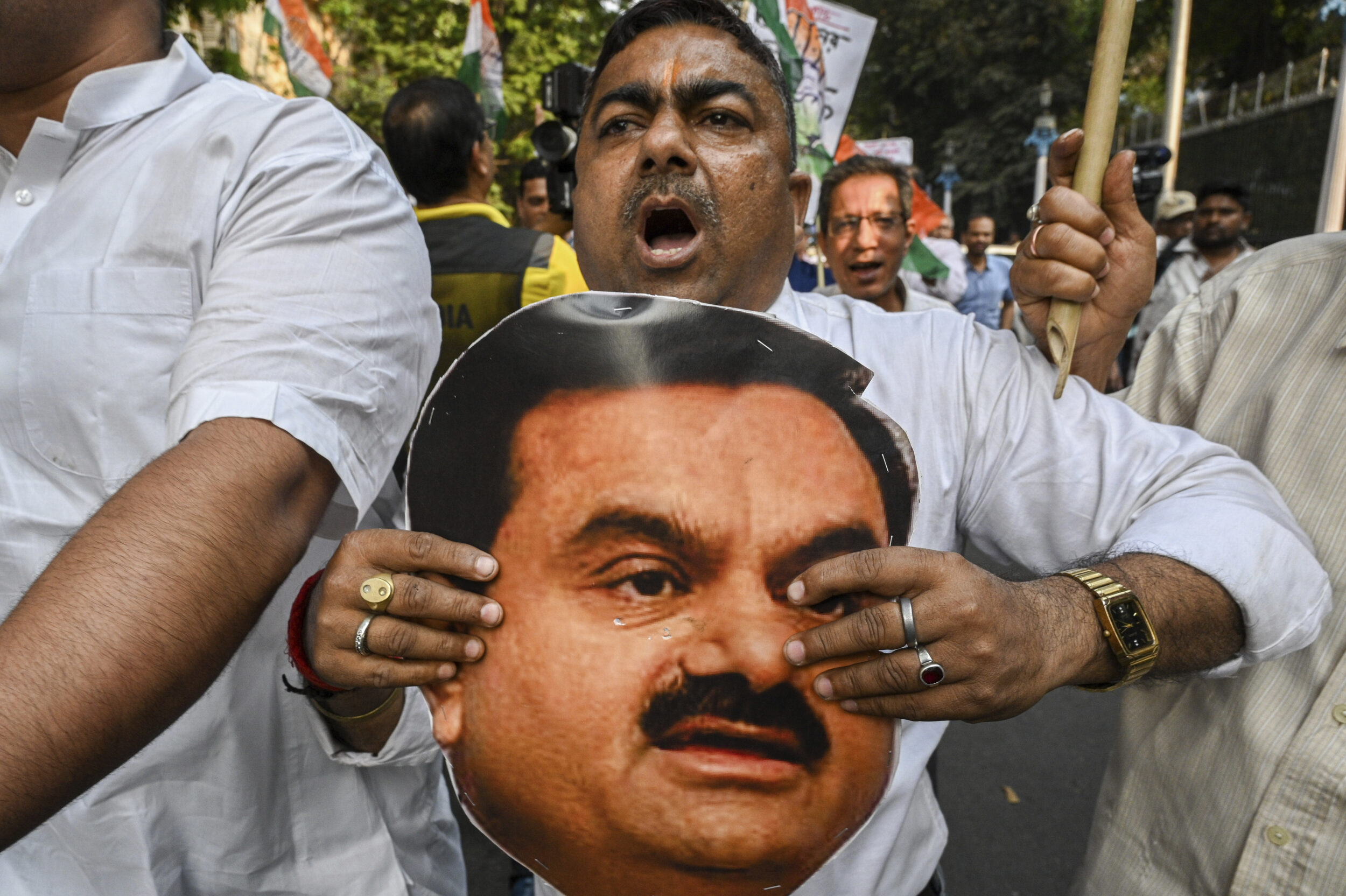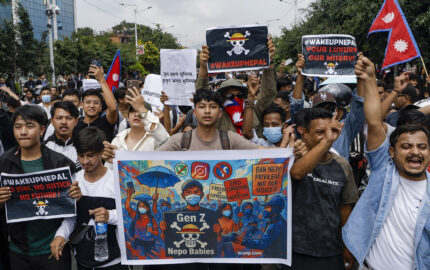Press freedom is facing intensifying scrutiny in various Indian courts, marking a notably active period for legal battles over journalistic rights.
On Sept. 6, a Delhi civil court granted billionaire Gautam Adani sweeping power to gag journalists by way of an ex parte injunction — a court order issued without hearing the defendant’s side. The order was challenged and, temporarily, stayed; nevertheless, the effort to exert such power sets a concerning precedent. Before newsrooms could act on the order — by appealing the verdict through lawyers or even pushing back editorially — the Narendra Modi administration issued sweeping “takedown notices” on behalf of the Adani Group, directing several journalists, media houses, and content creators on YouTube to delete over 200 pieces of content considered "defamatory" by the conglomerate.
Alarmingly, the court granted Adani blanket freedom to compile his own rolling blacklist, as well as the continuing authority to order the removal of any criticism of him on the internet without further judicial scrutiny, until the court says otherwise.
In another case, TV journalist Abhisar Sharma — who was taken off the air for criticizing government policy and reduced to reporting via YouTube — is seeking relief from the courts. The Supreme Court of India granted him a four-week interim protection order, though it is unclear what will happen after that.
The Adani order is particularly onerous. It applies to investigative journalists, podcasters, satirists, as well as incidental mentions on social media by private individuals. Copies of the notice were also directed to Meta Platforms Inc. (parent of Facebook, Instagram, WhatsApp and Messenger) and Google Inc., placing responsibility on them to ensure no anti-Adani material appears on their platforms.
One of the lawyers representing Adani, Jagdeep Sharma, told the German news outlet Deutsche Welle that the conglomerate’s suit, which claims the negative reporting represents “anti-India interests,” was justified.
"The negative reporting amounted to an unjust campaign against the group, harming its reputation and overshadowing its contributions. There are vested interests behind this," Sharma said.
So, where does this leave India’s other journalists?
Ravish Kumar, one of India’s leading broadcast journalists, was elbowed out of NDTV when Adani acquired the channel last year and now runs a YouTube channel that has been censored from speaking about Adani under this new order. Also targeted were veteran journalists Paranjoy Guha Thakurta and Ravi Nair, outlets including Newslaundry and The Wire, and popular YouTubers like Dhruv Rathi.
But perhaps the order’s most insidious feature is its 10th defendant: “Ashok Kumar” — or in U.S. legal parlance: “John Doe.” The inclusion of the hypothetical John Doe allows Adani — the world’s 28th richest man with an estimated net worth of around $56 billion — to maintain a list of people he believes are defaming his company, and report any URLs, posts, or article links that he considers defamatory to internet intermediaries or government agencies, which must then take them down within 36 hours.
In addition to granting Adani a kind of censorship pipeline, the order also sets a precedent for other billionaires to follow, making it one of the most consequential actions against Indian journalism in recent memory.
“Press freedom in India has always had a tenuous existence, being threatened by the exercise of legal, social and financial censorship,” said a legal expert involved in several such cases who requested anonymity for fear of reprisals. “However, over recent years there is an increasing brazenness by the government and corporations to bend the law and regulatory frameworks in our country to direct censorship.”
The expert added that the Adani case is shocking in that it allows a large conglomerate to have powers on par with a judge — granting it an ex parte injunction so broad that it can virtually scrub the entire internet clean of things it doesn’t agree with. What’s more, the order was given without even hearing the defense for articles that dated back to 2017.
Indian journalists are fighting back against these attacks on their constitutional rights to freedom of expression, and four of them — Nair, Abir Dasgupta, Ayaskant Das and Ayush Joshi — successfully challenged the Adani gag order, which was quashed in late September.
Appearing for the journalists, lawyer Vrinda Grover submitted in court that the John Doe order was not legally sustainable.
“Is there any law in this country which can ask anyone, particularly the press, that you won’t write or question any entity in this country? That is not what the law allows,” Grover said. Likening the multitude of takedown orders that had already happened to a tsunami, Grover added, “Heavens have fallen on what is the law of the land. Please note, freedom of speech, of expression, the journalists are agents of the press who take this right forward."
The judge agreed, holding that the sweeping ex parte order was unsustainable, as it had been passed down without granting the journalists a chance to be heard.
In other ongoing cases, Ravish Kumar has challenged the takedown notice, and Paranjoy Guha-Thakurta has found temporary relief against the gag order; a senior civil judge will hear his side of the argument and render a decision.
"That is how official narratives are upheld, by deliberately marginalizing rival voices by limiting reach, smear campaigns, and lazy innuendo."
— M. Rajshekhar, Indian investigative journalist
According to Reporters Without Borders (known by its French acronym, RSF), India’s media has fallen into an “unofficial state of emergency” since Modi became prime minister in 2014. His political interests, as well as those of his closest allies in the industry, have seemingly fused together to dominate the media landscape in an unprecedented manner.
“While, on the one hand, the government has tightened its grip on both state and privately owned media, media ownership has become heavily concentrated in the hands of a few conglomerates that are mostly allied with the government, as evidenced by the Adani Group’s power grab,” the RSF report notes. The report points out that the multinational conglomerate led by Adani — a close Modi ally with interests in port development, energy and mining — took control of NDTV, one of the country’s last bastions of critical journalism, through a hostile takeover.
Now, in his 11th year in power, Modi has a chokehold on journalism so firm that it seems not a single factoid can be shared without permission. As the only prime minister to never hold open press conferences — instead granting interviews to hand-picked media supporters — critics say he has also weaponized the courts and law enforcement against the media in unprecedented ways. For over a decade, journalists critical of the Modi government have been subjected to harassment campaigns through police violence, tax investigations, outright threats, or suspension of much-needed revenue from government advertising. Now, the John Doe orders and ex parte injunctions highlight a growing trend of wielding the law in ways that have profound implications for media independence.
“At one time, we would write and await feedback from editors, wondering if the focus [and] all the reporting had been retained,” said M. Rajshekhar, a veteran investigative journalist who covers environment policies. “Then came our age of propaganda, where good reporters first got edged out of legacy newsrooms, [or] found themselves battling social media trolls after each report. That is how official narratives are upheld, by deliberately marginalizing rival voices by limiting reach, smear campaigns, and lazy innuendo.”

